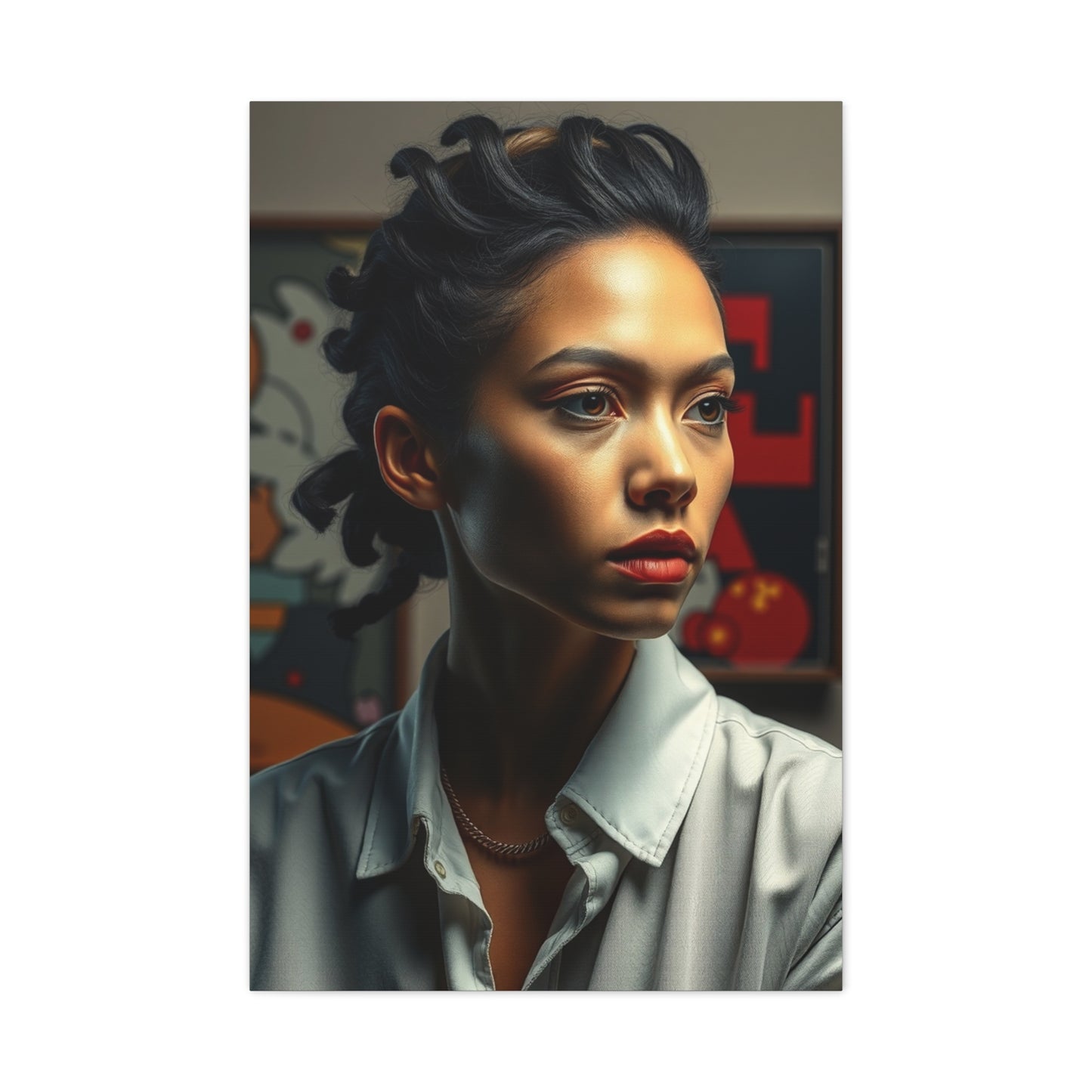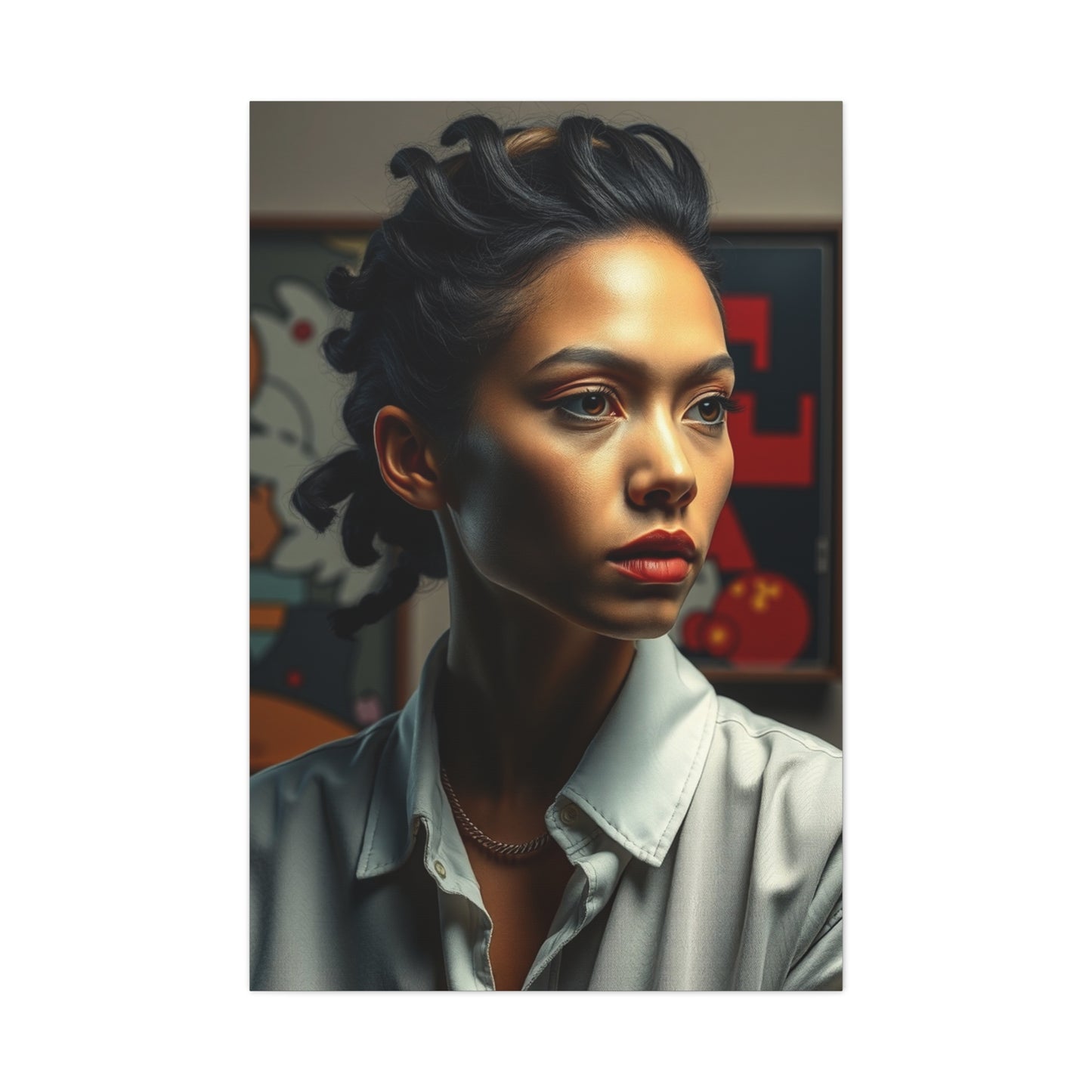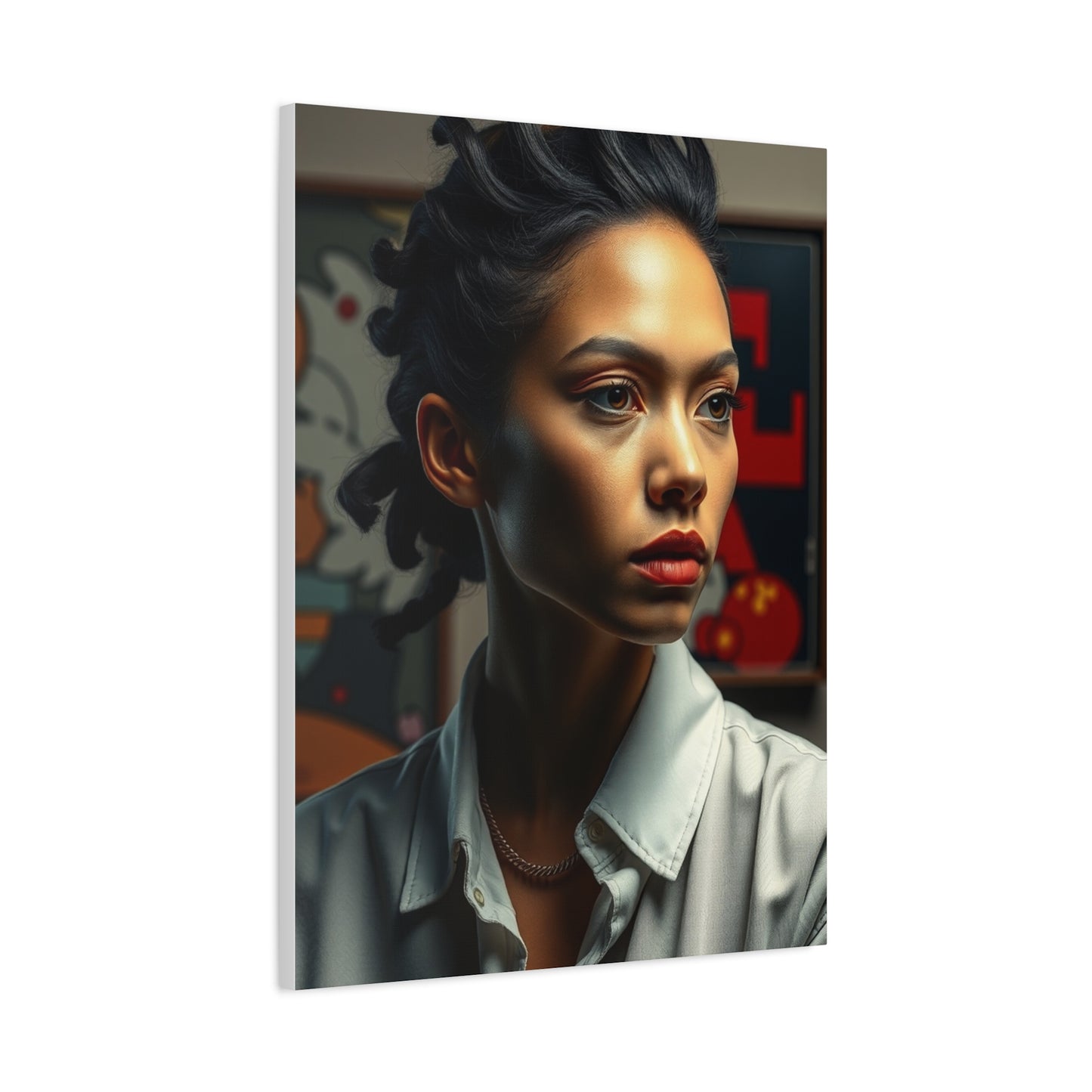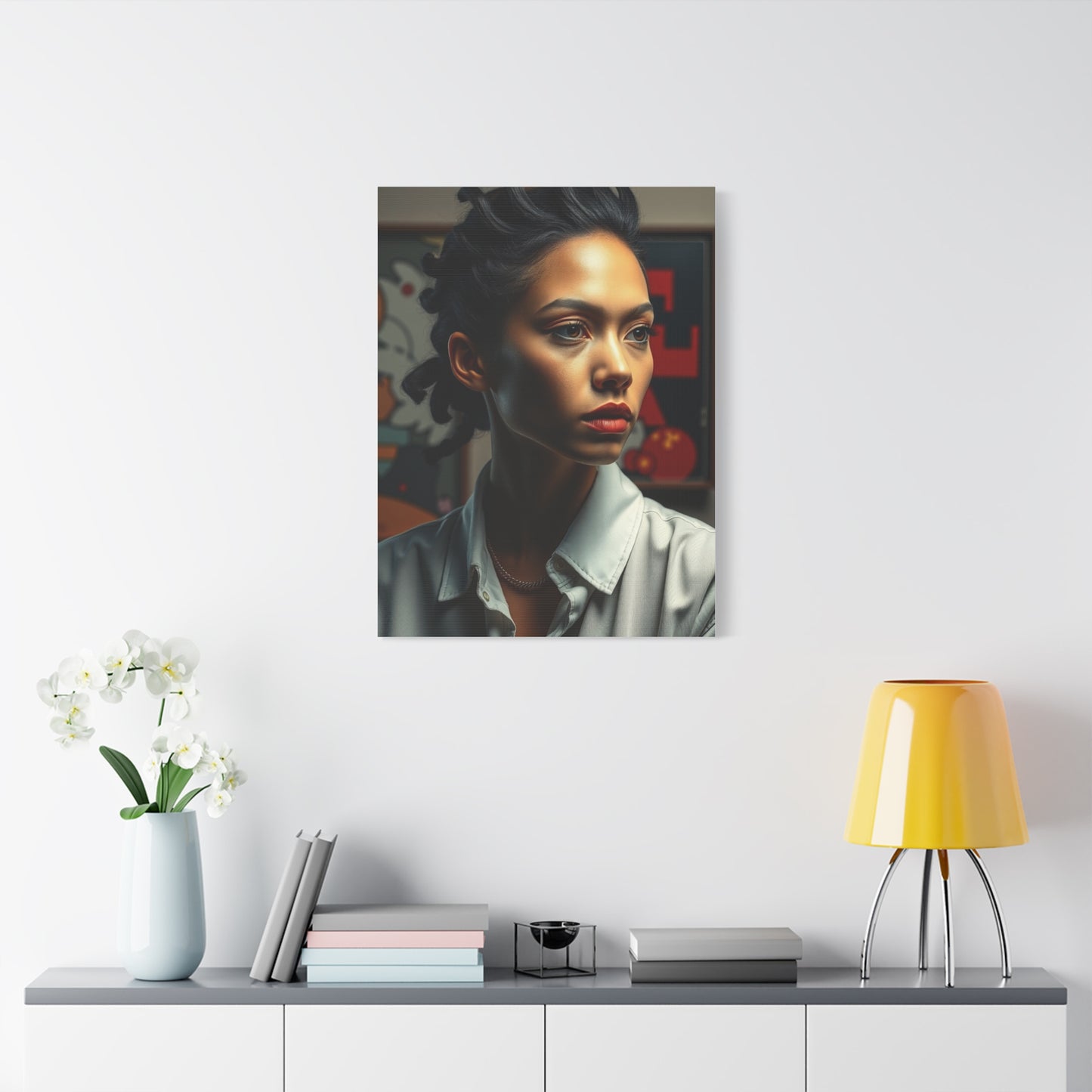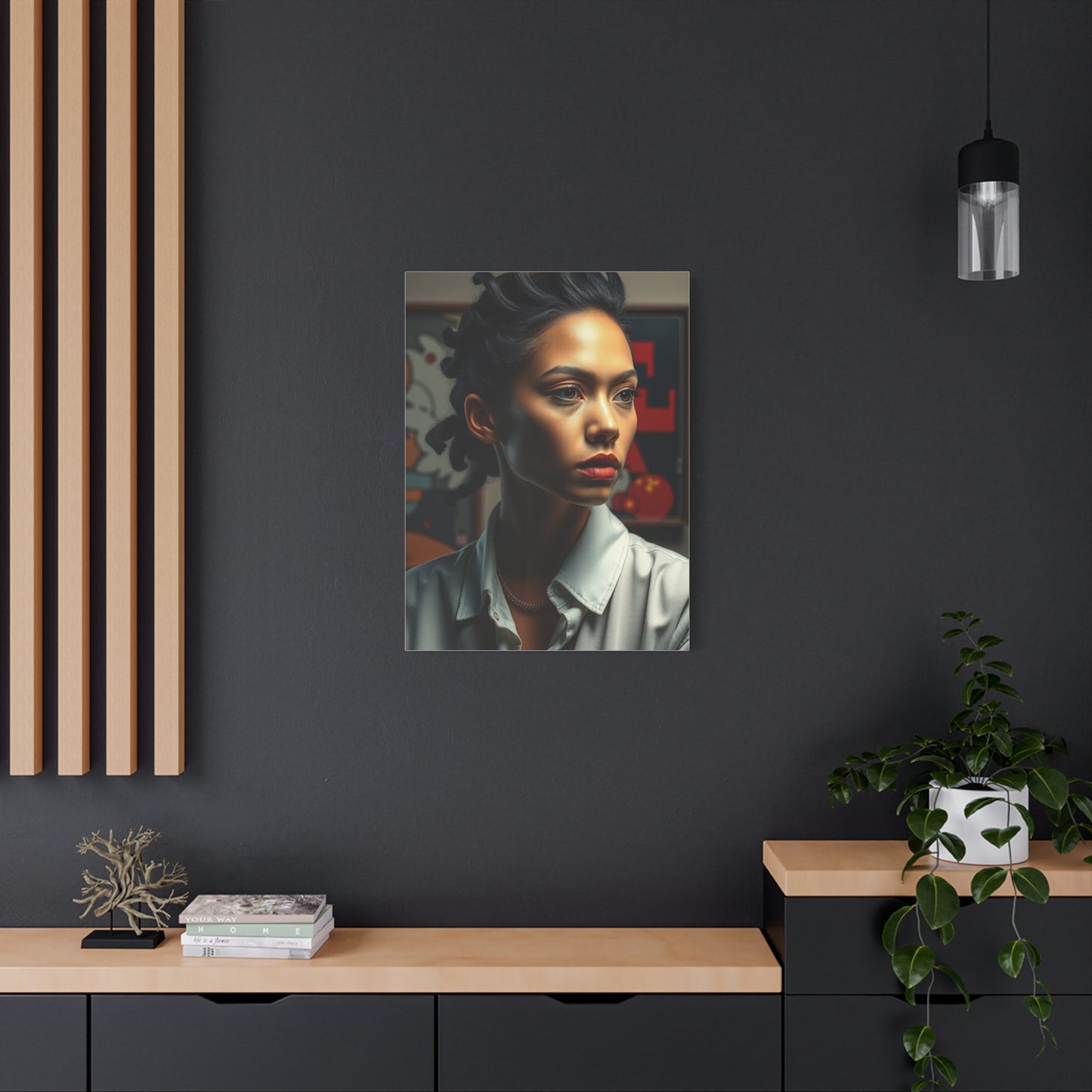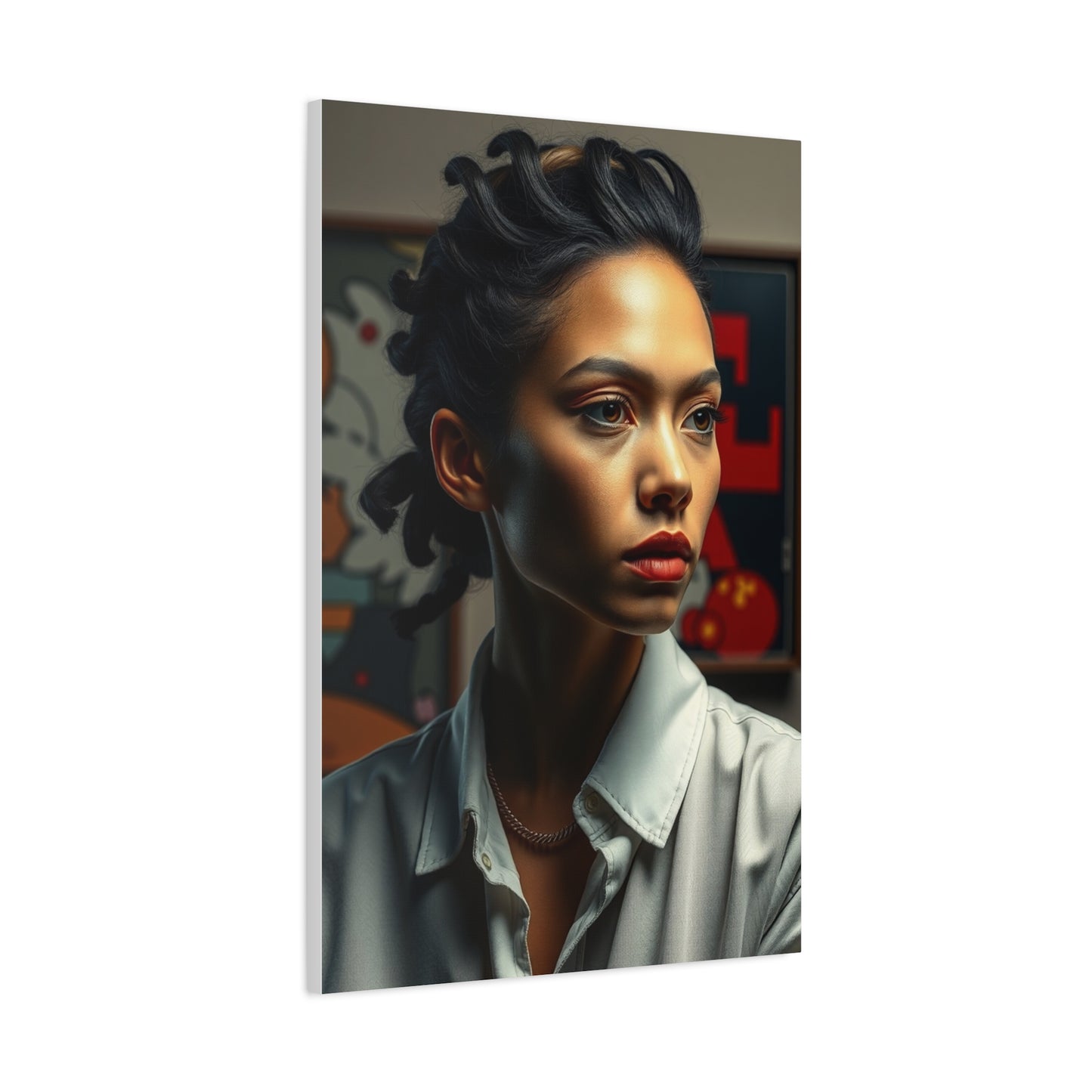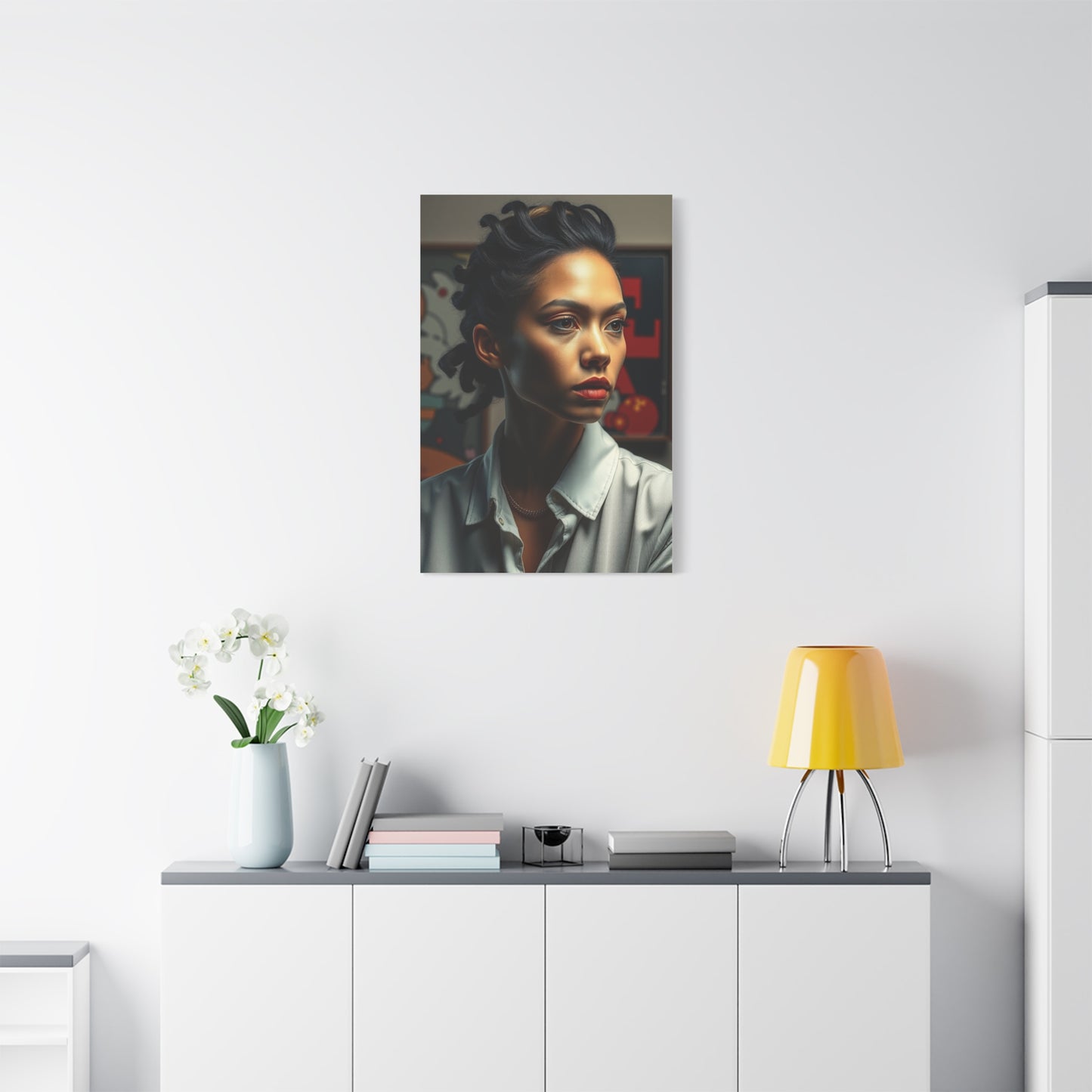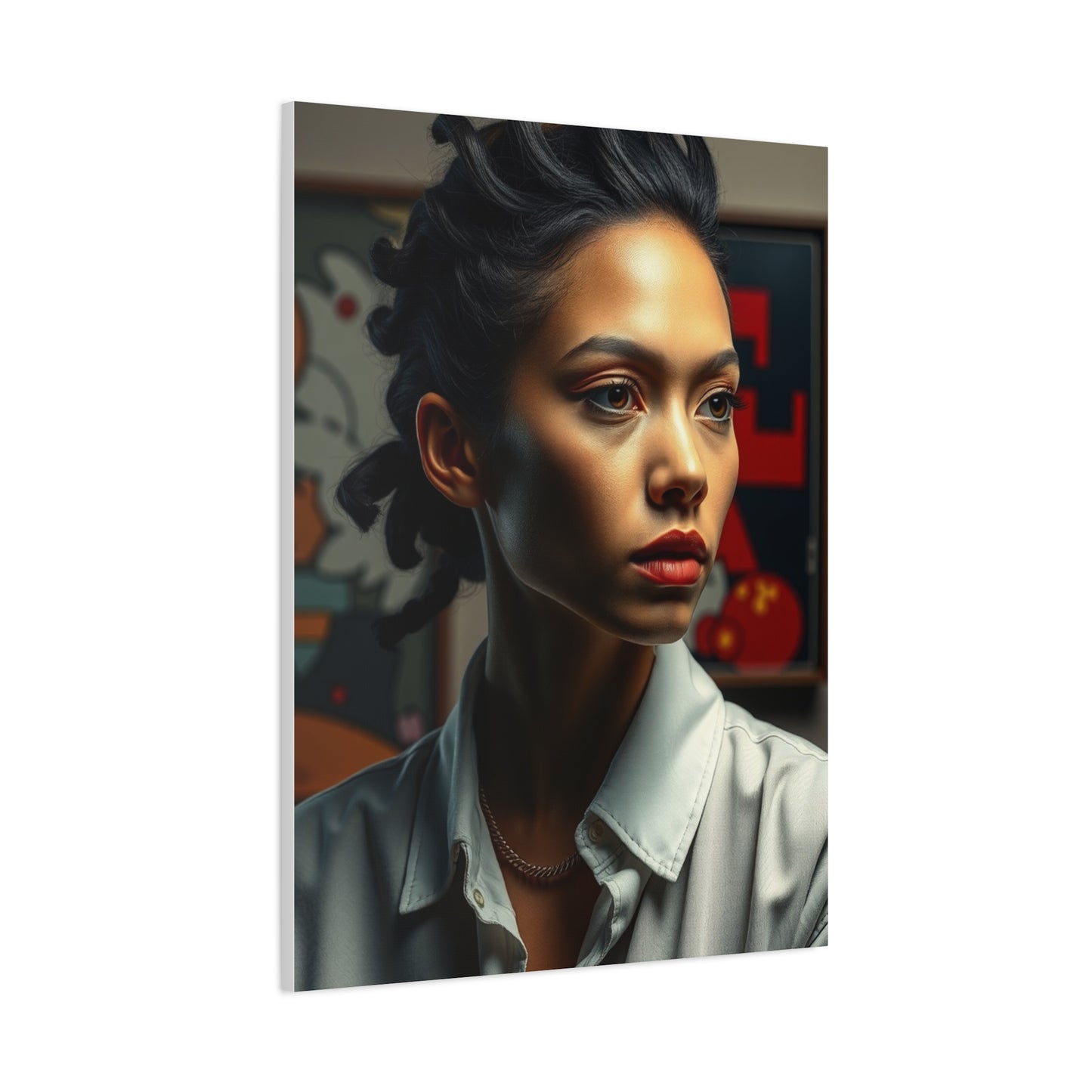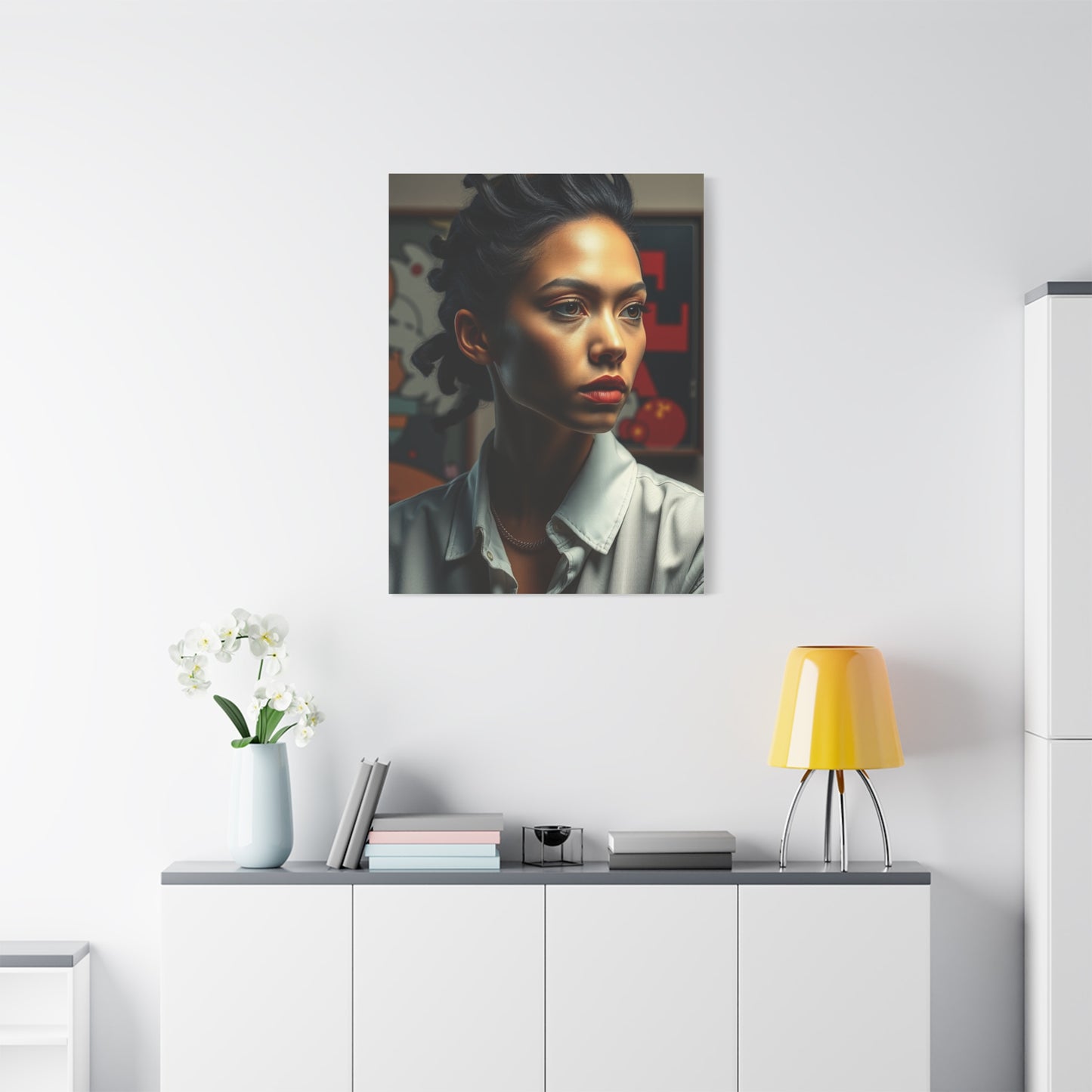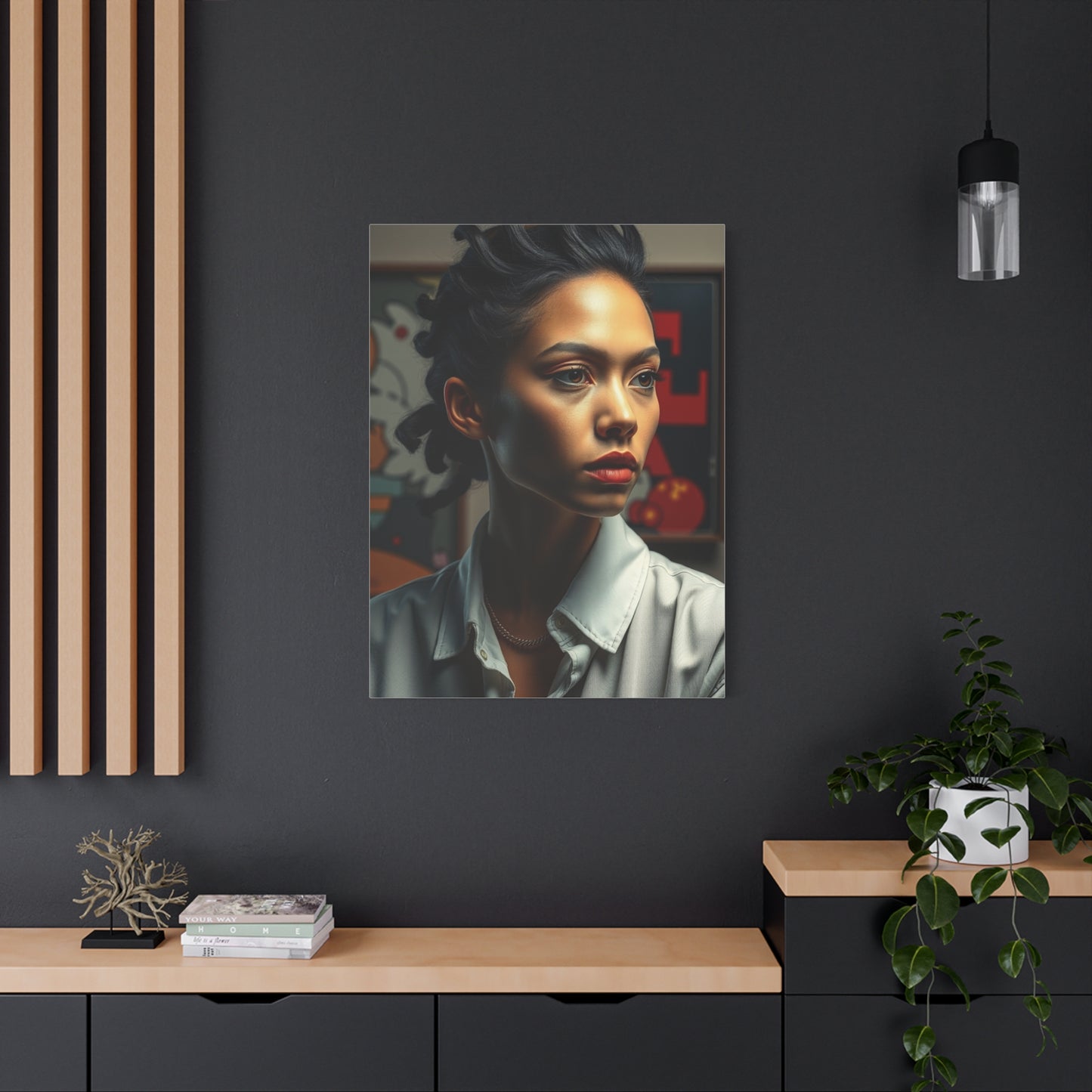Contemporary Grandeur: Modern Canvas Wall Art for Sophisticated Spaces
The world of interior design has witnessed a remarkable transformation in recent years, with contemporary grandeur emerging as a defining aesthetic for modern homes. This sophisticated approach to decorating combines bold artistic expression with refined elegance, creating spaces that are both visually striking and deeply personal. Canvas wall art has become the cornerstone of this movement, offering homeowners an accessible yet impactful way to infuse their living spaces with character, depth, and unmistakable style. As we explore the multifaceted world of modern canvas prints, we'll discover how these artistic statements can elevate any room from ordinary to extraordinary, transforming bare walls into captivating galleries that reflect individual taste and contemporary sensibilities.
Luxe Interiors with Contemporary Grandeur Art
Creating luxurious interiors has evolved beyond traditional opulence into a more nuanced expression of refined taste. The integration of contemporary grandeur art into upscale spaces represents a marriage of modern aesthetics with timeless sophistication. These artistic pieces serve as focal points that anchor entire room designs, establishing a visual hierarchy that guides the eye and creates a sense of intentional luxury. When selecting canvas prints for high-end interiors, designers focus on pieces that demonstrate exceptional quality in both composition and execution, ensuring that every element contributes to an atmosphere of cultivated elegance.
The color palette chosen for luxe interiors plays a crucial role in establishing the desired ambiance. Rich jewel tones paired with metallic accents create depth and visual interest, while monochromatic schemes in sophisticated neutrals offer a more understated approach to grandeur. Large-format canvas prints in these carefully curated color stories become architectural elements in their own right, defining spaces and creating visual continuity throughout the home. The interplay between light and shadow on textured canvas surfaces adds another dimension to these installations, ensuring that the artwork evolves throughout the day as natural lighting conditions change.
Material quality becomes paramount when curating art for luxury spaces. Premium canvas materials with museum-grade printing techniques ensure longevity and color vibrancy that maintains its impact for decades. The physical presence of a well-crafted canvas print, with its substantial frame and expertly stretched fabric, communicates value and permanence. These pieces become investments in the home's aesthetic identity, chosen not just for their immediate visual appeal but for their ability to remain relevant and captivating as design trends evolve.
The placement of contemporary grandeur art within luxe interiors requires strategic thinking about sightlines and spatial relationships. Entryways benefit from commanding pieces that establish the home's design narrative from the first impression. Living areas can accommodate larger installations or thoughtfully arranged gallery walls that create conversation points and visual anchors. Private spaces like master suites and studies offer opportunities for more personal artistic statements that reflect the inhabitants' individual tastes while maintaining the overall design cohesion.
Lighting design specifically tailored to illuminate canvas art enhances its impact exponentially. Professional picture lighting, recessed spotlights, or track lighting systems can be employed to create dramatic effects that highlight textures, colors, and compositional elements. The careful consideration of light temperature and intensity ensures that artwork appears as the artist intended, with colors rendered accurately and details visible without overwhelming glare. This attention to illumination transforms static wall decorations into dynamic design features that command attention and admiration.
Bold Statement: Grandeur Canvas Prints
Making bold statements through canvas prints requires confidence in artistic selection and placement decisions. These pieces transcend mere decoration, becoming declarations of personality and style that define the character of living spaces. The most effective statement pieces possess certain qualities that set them apart from conventional wall art: scale that commands attention, compositions that intrigue the eye, and color stories that resonate emotionally with viewers. When homeowners commit to bold artistic choices, they create environments that feel intentional, curated, and deeply personal.
Scale plays a fundamental role in creating statement-making impact with canvas prints. Oversized artworks that span entire walls or dominate significant portions of vertical space create immediate visual drama. These large-format pieces work particularly well in rooms with high ceilings or expansive wall areas that might otherwise feel empty or underutilized. The psychological impact of encountering a substantial artwork cannot be overstated; it signals investment in aesthetic quality and demonstrates a sophisticated understanding of spatial design principles.
Color intensity and contrast define many of the most memorable statement pieces. Artworks that employ vivid, saturated hues create energetic focal points that inject vitality into neutral surroundings. Alternatively, pieces that use dramatic contrasts between light and dark values generate visual tension that captures and holds viewer attention. The emotional resonance of color should not be underestimated; warm tones create inviting, energetic atmospheres, while cool palettes promote calm sophistication. Understanding these psychological effects allows for intentional mood creation through artistic selection.
Abstract compositions offer particular freedom for statement-making, as their open interpretation invites personal connection and conversation. Geometric patterns create structure and rhythm, appealing to those who appreciate order and mathematical beauty. Organic, flowing forms suggest movement and natural inspiration, bringing elements of the external world into interior spaces. Figurative elements, when rendered in contemporary styles, bridge traditional and modern sensibilities, offering familiar subjects through fresh artistic perspectives. Each approach provides distinct opportunities for creating impactful visual statements.
The framing and presentation of statement canvas prints deserves careful consideration. Floating frames create shadow gaps that emphasize the three-dimensional quality of canvas while providing protective structure. Gallery wrap techniques, where the image extends around the canvas edges, create clean, contemporary presentations that work seamlessly with modern architecture. Mixed media approaches incorporating elements like metal leafing or textured overlays add tactile interest that enhances visual impact. These presentation choices should complement rather than compete with the artwork itself.
Grouping multiple canvases to create unified statements offers flexibility and visual complexity. Triptychs and multi-panel compositions allow for narrative development across connected pieces, creating dynamic installations that reward extended viewing. Asymmetrical arrangements of varied sizes generate movement and energy, while grid-based layouts provide structured sophistication. The negative space between grouped elements becomes as important as the artwork itself, creating breathing room that prevents visual overwhelm while maintaining cohesive impact.
Sophisticated Spaces: Contemporary Wall Art
Sophistication in contemporary spaces emerges from the thoughtful integration of art with architectural elements and furnishings. This refined approach to interior design prioritizes quality over quantity, selecting pieces that demonstrate artistic merit and design relevance. Contemporary wall art for sophisticated spaces typically exhibits restraint in execution while maintaining visual interest through subtle complexity. The color palettes tend toward curated neutrals, elegant monochromes, or carefully selected accent colors that coordinate with the broader design scheme without creating jarring contrasts.
The concept of sophistication in design encompasses multiple dimensions beyond mere visual appearance. Intellectual engagement with artwork adds depth to sophisticated spaces, as pieces selected for their conceptual content or artistic significance create opportunities for meaningful contemplation. Historical references filtered through contemporary perspectives bridge past and present, demonstrating cultural literacy and design awareness. The absence of obvious trends or temporary aesthetic fads ensures that sophisticated spaces maintain their relevance across changing design cycles.
Texture plays a significant role in creating sophisticated visual experiences with canvas art. The inherent texture of canvas fabric provides tactile interest that flat prints cannot replicate, adding dimensional quality that changes appearance based on viewing angle and lighting conditions. Some contemporary artists incorporate actual dimensional elements into their canvas works, creating relief effects that blur boundaries between painting and sculpture. These textural variations add subtlety and nuance that reveal themselves gradually, rewarding careful observation and creating lasting engagement.
The relationship between contemporary wall art and architectural features defines sophisticated spatial experiences. Artwork positioned to emphasize architectural details like crown molding, wainscoting, or built-in shelving creates harmonious integration between structural and decorative elements. Conversely, art placed in deliberate contrast to architectural features can highlight both elements through juxtaposition. Understanding these spatial relationships allows for design decisions that enhance rather than compete, creating cohesive environments where every element supports the overall aesthetic vision.
Color theory principles guide sophisticated art selection, ensuring that canvas prints integrate seamlessly with existing design elements. Analogous color schemes create harmonious, flowing environments where artwork extends the existing palette. Complementary color approaches introduce controlled contrast that enlivens spaces without creating discord. Triadic color relationships offer dynamic balance, while monochromatic schemes demonstrate restraint and confidence in tonal variation. Mastery of these color relationships distinguishes sophisticated spaces from those that feel randomly assembled or visually chaotic.
The curation process for sophisticated contemporary art involves consideration of artistic provenance, production quality, and design relevance. Limited edition prints from recognized artists carry cachet that elevates entire spaces, signaling discernment in aesthetic choices. Reproductions of museum-quality works bring cultural sophistication into private homes, making historically significant art accessible for daily enjoyment. Original works from emerging artists demonstrate support for contemporary creative communities while offering potential appreciation in both artistic and monetary value. Each approach to art acquisition contributes differently to the sophisticated atmosphere of modern spaces.
Modern Elegance: Grandeur Canvas Inspiration
Modern elegance represents a refined aesthetic that balances contemporary sensibilities with timeless grace. Canvas art that embodies this quality demonstrates clean lines, thoughtful composition, and sophisticated color application that transcends temporary trends. The inspiration for elegant modern pieces often draws from multiple sources: natural forms simplified to their essential elements, architectural details that emphasize proportion and balance, or abstract explorations of color relationships that create visual poetry. Understanding these inspirational sources helps in selecting canvas prints that will maintain their appeal and relevance for years to come.
The minimalist movement significantly influences modern elegant canvas art, with its emphasis on essential forms and elimination of superfluous details. However, contemporary interpretations of minimalism have evolved beyond stark simplicity to incorporate warmth, texture, and subtle complexity. These evolved approaches maintain the clean aesthetic of traditional minimalism while adding layers of interest that prevent spaces from feeling cold or sterile. The result is artwork that feels both fresh and approachable, sophisticated yet inviting.
Nature serves as an endless source of inspiration for elegant modern canvas art, though contemporary interpretations move beyond literal landscape representations. Abstracted botanical forms capture the essence of plant life through simplified shapes and stylized color palettes. Geological formations inspire compositions that explore texture, stratification, and natural color gradients. Water in its various states provides metaphors for fluidity and movement that translate beautifully into canvas compositions. These nature-inspired pieces bring organic elements into built environments, creating connections to the natural world that enhance wellbeing and aesthetic satisfaction.
Geometric precision characterizes many examples of modern elegant canvas art, with mathematical relationships creating visual harmony and intellectual satisfaction. Golden ratio proportions appear frequently in well-designed compositions, creating subconscious recognition of balanced beauty. Symmetrical arrangements provide stability and formality, while asymmetrical compositions generate dynamic tension and movement. Repetition of geometric elements creates rhythm and pattern that guides the eye through the composition. These mathematical underpinnings contribute to the enduring appeal of geometrically inspired canvas art.
The interplay of positive and negative space distinguishes elegant modern compositions from cluttered or busy designs. Generous use of breathing room around focal elements allows individual components to command attention without competing. Strategic placement of visual weight creates balance while maintaining interest across the entire canvas surface. The confidence to leave areas unadorned demonstrates sophisticated restraint, trusting viewers to appreciate subtlety and implication rather than requiring every inch of canvas to contain explicit content.
Cultural influences from various design traditions enrich modern elegant canvas art with diverse perspectives and aesthetic approaches. Japanese wabi-sabi philosophy contributes appreciation for imperfection and transience, manifesting in compositions that embrace organic irregularity. Scandinavian design principles emphasizing functionality and natural materials influence artwork that celebrates simplicity and honesty. Mediterranean sensibilities bring warmth and earthiness through sun-baked color palettes and textural richness. These cultural threads weave together in contemporary canvas art, creating globally informed aesthetics that feel both cosmopolitan and accessible.
Artistic Drama: Contemporary Wall Décor
Creating dramatic impact through contemporary wall décor requires bold artistic choices and confident presentation. Dramatic canvas art captures attention immediately, creating memorable first impressions and serving as conversation catalysts. These pieces often employ intense color contrasts, unusual scale relationships, or provocative subject matter that challenges conventional expectations. The goal is not merely to decorate walls but to create emotional responses and memorable experiences that transform ordinary rooms into distinctive environments.
High contrast compositions generate dramatic visual impact through stark value relationships. Black and white artwork creates timeless drama that works across varied design styles, from ultra-modern minimalism to transitional eclecticism. The absence of color forces attention to form, texture, and compositional structure, creating powerful graphic statements. When color is introduced selectively into high-contrast pieces, it gains amplified impact, drawing the eye with magnetic intensity. These techniques create artwork that commands attention and maintains interest through bold simplicity.
Scale manipulation creates drama by subverting expectations and challenging spatial perceptions. Macro perspectives that enlarge minute details to monumental proportions reveal hidden beauty in overlooked subjects. Alternatively, vast landscapes compressed into intimate formats create contemplative intensity. Playing with perspective and scale relationships within compositions generates visual tension that engages viewers intellectually as well as aesthetically. These approaches transform familiar subjects into extraordinary visual experiences worthy of extended contemplation.
Dynamic compositions suggesting movement and energy infuse static canvas prints with kinetic drama. Diagonal lines create visual pathways that propel the eye through the composition, generating sense of motion and urgency. Curved forms suggest flowing movement reminiscent of natural forces like wind or water. Fragmented or exploded compositions imply energetic transformation or dissolution. Even in still imagery, these compositional techniques create psychological impressions of dynamism that enliven spaces and prevent visual stagnation.
Emotional intensity distinguishes dramatically impactful canvas art from merely decorative pieces. Artwork that evokes strong emotional responses, whether joy, contemplation, excitement, or intrigue, creates memorable experiences that transcend simple aesthetic appreciation. Color psychology plays significantly into emotional impact, with particular hues triggering specific psychological responses. Compositional tension through unresolved visual questions keeps viewers engaged, returning to the artwork repeatedly as they seek resolution or new interpretations. This emotional engagement transforms wall décor into meaningful components of daily life.
Lighting strategies amplify the dramatic potential of contemporary canvas art, transforming pieces throughout the day as ambient conditions change. Directional lighting creates shadows and highlights that emphasize texture and dimensional qualities. Color-changing LED systems allow for mood adjustments that alter the artwork's appearance and emotional impact. Strategic backlighting creates dramatic silhouettes or halo effects that expand the artwork's visual presence beyond its physical boundaries. These lighting considerations should inform both art selection and installation planning to maximize dramatic impact.
Statement Canvas for Chic Interiors
Chic interiors balance current design trends with personal style expression, creating spaces that feel both fashionable and authentic. Statement canvas pieces serve as anchors for chic design schemes, establishing visual themes that inform all subsequent design decisions. These key artworks should reflect the inhabitant's personality while demonstrating awareness of contemporary aesthetic movements. The selection process requires honest self-assessment about genuine preferences versus temporarily trending styles, ensuring that chosen pieces maintain their appeal beyond initial installation.
The relationship between statement canvas and surrounding furnishings determines overall design success in chic interiors. Artwork should complement furniture styles without creating slavish matchy-matchy effects that feel contrived. A contemporary abstract canvas might provide exciting contrast against traditional furnishings, creating dynamic tension that elevates both elements. Alternatively, harmonious coordination between art and décor creates sophisticated unity that feels intentionally curated. Understanding when to employ contrast versus coordination distinguishes genuinely chic spaces from those that feel either chaotic or boring.
Color coordination between statement canvas and interior elements requires nuanced understanding of how hues interact across different materials and surfaces. Exact color matching often appears flat and uninteresting, while thoughtful tonal variations create depth and visual richness. Pulling accent colors from artwork into throw pillows, area rugs, or decorative objects creates cohesive design narratives without overwhelming repetition. The 60-30-10 rule, allocating color in those proportions across dominant, secondary, and accent applications, provides useful framework for balanced color integration.
The psychology of first impressions makes statement canvas selection particularly important for entry areas and main living spaces. These high-visibility locations showcase personal taste to visitors while setting tonal expectations for the entire home. Bold, confident artwork in entrance areas communicates welcome and personality immediately. Living room statement pieces should reflect the space's function as both personal retreat and social gathering area, balancing individual expression with broad appeal. The investment in these key pieces pays dividends in design cohesion and daily aesthetic satisfaction.
Seasonal rotation of statement canvas allows for design refreshment without complete redecoration. Maintaining a collection of pieces that reflect different moods or seasons enables regular environmental updates that keep spaces feeling current and intentional. Summer might call for light, airy pieces with cool color palettes, while autumn invites richer, warmer tones and more grounded compositions. This approach requires modest initial investment in multiple pieces but provides ongoing flexibility and prevents design stagnation. Proper storage of rotated artwork maintains its condition and ensures long-term enjoyment.
The concept of investment dressing translates effectively to canvas art selection for chic interiors. Just as wardrobe investment pieces provide foundation for varied outfit creation, key statement canvas works anchor multiple design iterations as surrounding elements change. Selecting artwork with sufficient complexity and quality to remain engaging across years justifies higher initial expenditure. These pieces should demonstrate timeless qualities that transcend temporary trends while maintaining contemporary relevance. Building an art collection with this long-term perspective creates environments that mature gracefully rather than dating quickly.
Luxe Wall Art for Modern Homes
Luxury in modern home design manifests through careful selection of exceptional pieces rather than quantity of decorative objects. Luxe wall art distinguishes itself through superior production quality, artistic significance, and design relevance. The canvas material itself should demonstrate premium characteristics: tight weave for fine detail rendering, archival quality for longevity, and substantial weight that communicates permanence. Printing techniques employing giclée processes with archival inks ensure color accuracy and fade resistance that maintains investment value across decades.
The frame quality and presentation style significantly impact the luxurious perception of canvas art. Solid hardwood frames with hand-applied finishes demonstrate craftsmanship that complements artistic content. Metal frames in brushed finishes provide contemporary sophistication suitable for modern aesthetics. The frame depth and profile should proportion appropriately to the artwork size, creating visual balance that neither overwhelms nor appears insufficient. Corner joinery should show precision manufacturing with invisible seams and perfect angles. These construction details separate truly luxurious pieces from economy alternatives.
Artistic content appropriate for luxury contexts often demonstrates conceptual depth beyond surface aesthetics. Abstract explorations of philosophical concepts create intellectual engagement worthy of contemplation. Representational works that reveal new details and interpretations upon repeated viewing maintain long-term interest. Limited edition pieces from recognized artists carry provenance that enhances both monetary and aesthetic value. Original works commission specifically for particular spaces represent ultimate luxury in wall art, creating unique statements impossible to replicate.
The installation process for luxe wall art deserves professional attention to ensure proper placement and secure mounting. Professional art installers understand weight distribution, wall construction considerations, and aesthetic spacing principles that optimize presentation. Proper hardware selection based on wall type and artwork weight prevents disasters while maintaining clean presentations. Leveling precision and attention to sightlines from various room positions demonstrates the care worthy of valuable artwork. This professional approach to installation protects both the investment and the wall surfaces.
Maintaining luxe canvas art requires understanding of proper care techniques that preserve appearance and prevent degradation. Dusting with appropriate soft materials removes particulates without damaging surfaces. Controlling environmental factors like humidity, temperature, and light exposure prevents fading and material deterioration. Professional cleaning services address more significant maintenance needs without risking amateur damage. Insurance documentation including professional appraisals protects financial investment while creating provenance records. These maintenance considerations extend the life and appearance of luxury canvas art indefinitely.
The integration of smart home technology with luxe wall art creates dynamic presentations that adapt to changing conditions and preferences. Automated lighting systems adjust illumination based on time of day or ambient light levels, ensuring optimal presentation conditions. Motorized display systems allow for artwork rotation or concealment, creating flexibility in multi-function spaces. Environmental monitoring systems track conditions that affect art preservation, alerting owners to potentially damaging situations. These technological integrations enhance both the enjoyment and preservation of luxury canvas art collections.
Contemporary Grandeur: Bold Colors & Shapes
The boldest expressions of contemporary grandeur emerge through fearless use of saturated colors and decisive geometric shapes. These elements combine to create visual impact that transforms walls into artistic statements of confidence and personality. Color selection in bold contemporary work often employs hues at full saturation, embracing intensity that energizes spaces and demands attention. Primary colors gain renewed relevance in modern contexts, their fundamental purity creating graphic punch that feels both nostalgic and fresh. Secondary and tertiary colors offer more nuanced options while maintaining chromatic strength.
Geometric shapes provide structural foundation for bold contemporary compositions, their clean edges and mathematical precision creating order within colorful complexity. Circles and curves introduce organic softness that balances harder angular elements. Triangles and polygons create directional energy and dynamic tension. Rectangles and squares establish stability and proportion. The interplay between different geometric forms generates visual rhythm and compositional movement that guides viewer attention through deliberate pathways. Understanding these fundamental shapes empowers intentional design communication through canvas art.
Color blocking techniques create dramatic visual divisions within canvas compositions, establishing distinct zones of chromatic intensity. Hard edges between color fields generate graphic clarity reminiscent of mid-century modernism. Subtle gradations and ombré effects create softer transitions while maintaining color boldness. Overlapping transparent color layers build complexity and depth, suggesting dimensionality beyond the flat canvas surface. These various blocking approaches offer different aesthetic effects suitable for varied design contexts and personal preferences.
The psychological impact of bold colors and shapes in living spaces affects mood and energy levels significantly. Warm color dominance creates energetic, social atmospheres appropriate for active family areas. Cool color prevalence establishes calm, contemplative environments suitable for bedrooms or studies. The specific cultural associations and personal memories connected to particular colors add individualized meaning that transcends general psychological principles. Recognizing these effects allows for intentional mood creation through strategic canvas art selection and placement.
Scale relationships between colors and shapes within compositions affect visual hierarchy and viewer attention patterns. Larger color fields establish dominance and anchor compositions, providing visual weight and stability. Smaller color accents create focal points and detail interest that reward closer inspection. The proportional relationships between different colored areas create balance or intentional imbalance depending on artistic intent. Shape sizes similarly communicate importance and create compositional structure. Manipulating these scale relationships generates varied visual effects from harmonious balance to dynamic tension.
The historical context of bold color and shape usage in art provides rich foundation for contemporary interpretations. Bauhaus principles of primary colors and fundamental forms continue influencing modern design aesthetics. Abstract Expressionism's emotional color application and gestural shapes inform contemporary abstract works. Pop Art's embrace of commercial color palettes and graphic forms translates effectively to modern canvas prints. Understanding these historical precedents enriches appreciation while informing selection of pieces that resonate with established artistic traditions.
Sophisticated Canvas Prints for Living Rooms
Living rooms serve as primary gathering spaces where families relax, guests socialize, and daily life unfolds. The canvas prints chosen for these central locations should reflect this multifunctional nature while maintaining sophisticated aesthetic standards. Sophisticated living room art strikes balance between personal expression and broad appeal, creating focal points that spark conversation without alienating diverse viewers. The scale should proportion appropriately to the room dimensions, with larger spaces accommodating more substantial pieces and intimate rooms requiring carefully sized artwork that enhances rather than overwhelms.
Placement considerations significantly impact how sophisticated canvas prints function within living room environments. Above sofas represents traditional positioning that creates clear focal points in conversational seating arrangements. Fireplace mantels provide natural gallery spaces where canvas art commands attention as architectural focal points. Feature walls opposite main entries establish immediate visual impact for arriving guests. Corner arrangements add interest to often-underutilized spaces while creating cozy vignettes. Multiple placement options within single rooms allow for creative gallery wall approaches or balanced symmetrical installations.
Color palette selection for living room canvas prints should coordinate with existing furnishings while introducing sufficient interest to prevent monotony. Neutral foundations in warm or cool tones provide versatile backdrops that accommodate varied décor changes over time. Jewel tone accents inject richness and sophistication without overwhelming. Metallic elements in gold, silver, or copper add luxurious shimmer that catches light beautifully. Monochromatic schemes create cohesive sophistication through tonal variation rather than chromatic contrast. The specific palette choice should reflect the room's natural lighting conditions and intended atmosphere.
Subject matter appropriate for sophisticated living rooms ranges widely based on personal preferences and design contexts. Abstract compositions offer versatility and open interpretation suitable for diverse audiences. Landscape orientations, whether naturalistic or stylized, bring outdoor serenity into interior spaces. Architectural subjects appeal to design enthusiasts while providing graphic interest through structural forms. Botanical themes introduce organic elements that soften built environments. Figurative works require more careful selection to ensure appropriateness for mixed company and varied tastes. Each subject category offers numerous sophisticated interpretation possibilities.
The relationship between canvas art and other living room design elements creates cohesive or eclectic environments depending on coordination level. Matching art to major furniture pieces creates harmonious unity suitable for traditional or formal spaces. Coordinating with accent colors in rugs, pillows, or curtains provides subtle connections without obvious matching. Introducing completely contrasting elements generates dynamic energy and prevents predictable monotony. The decision between coordination and contrast should reflect overall design philosophy and personal comfort with visual tension.
Lighting design specific to living room canvas art enhances both daytime and evening presentations. Natural light considerations include avoiding direct sunlight that causes fading while maximizing ambient illumination. Window treatments should allow light control that protects artwork while maintaining room functionality. Artificial lighting through picture lights, track systems, or recessed fixtures provides focused illumination after dark. Dimmer controls allow intensity adjustment for different occasions and moods. Careful lighting planning ensures canvas prints remain visible focal points regardless of time or natural light conditions.
Modern Masterpiece: Grandeur Wall Art
Designating certain canvas pieces as modern masterpieces reflects their exceptional quality and design impact within contemporary interiors. These standout works demonstrate artistic excellence through composition, execution, and conceptual depth that elevates them beyond common decorative objects. The term masterpiece, while traditionally reserved for historically significant artworks, applies appropriately to contemporary pieces that achieve similar heights within their contexts. Recognizing and acquiring such pieces requires developed aesthetic sensibility and willingness to invest in exceptional quality.
The characteristics distinguishing modern masterpieces from ordinary canvas prints include technical excellence in execution and reproduction. Color fidelity that accurately represents artistic intent requires sophisticated printing processes and careful quality control. Detail resolution that maintains clarity at any viewing distance demonstrates superior source material and printing capabilities. Surface finish that enhances rather than detracts from visual presentation shows thoughtful production decisions. These technical factors combine with artistic merit to create truly masterful pieces worthy of prominent display.
Subject matter selection for masterpiece-quality grandeur wall art often explores universal themes through unique perspectives. Human experience and emotion find expression in abstract forms that resonate across cultural boundaries. Natural phenomena rendered in unexpected scales or perspectives reveal familiar subjects anew. Philosophical concepts visualized through symbolic imagery invite intellectual engagement. Historical or mythological references reinterpreted through contemporary lenses bridge past and present. These substantial themes provide depth that sustains interest across repeated viewings and changing life circumstances.
The investment justification for masterpiece-level canvas art extends beyond immediate aesthetic pleasure. Exceptional pieces appreciate in both personal significance and potentially monetary value as design aesthetics evolve. These works anchor design schemes that develop around them, providing stable foundations while other elements change. The daily interaction with genuinely excellent art elevates quality of life in measurable ways, contributing to wellbeing and cultural enrichment. This multifaceted value proposition supports higher initial expenditures on fewer, better pieces rather than numerous mediocre alternatives.
Provenance and limited availability enhance the masterpiece status of contemporary canvas art. Limited edition prints with documented print runs create scarcity that increases desirability and value. Artist signatures and certificates of authenticity provide verification and historical documentation. Gallery representation or museum inclusion indicates professional recognition of artistic merit. These credentials distinguish serious art from mass-produced décor while providing talking points that enrich the ownership experience beyond visual appreciation.
Curatorial presentation of modern masterpieces within home environments treats them with respect due their significance. Dedicated gallery walls in high-traffic areas ensure maximum visibility and impact. Professional-grade lighting systems provide museum-quality illumination that honors artistic intent. Complementary framing that enhances without competing demonstrates understanding of presentation principles. Surrounding décor edited to avoid visual competition allows masterpieces to command deserved attention. These presentation strategies recognize and communicate the exceptional nature of truly masterful contemporary canvas art.
Artistic Statement for Stylish Spaces
Stylish spaces distinguish themselves through intentional design decisions that reflect contemporary aesthetics while expressing individual personality. Artistic statements in these environments serve dual purposes: establishing visual focal points and communicating inhabitant values and tastes. The canvas art selected for stylish spaces should feel current without slavishly following temporary trends, balancing fashion-forward sensibilities with enduring appeal. Understanding the difference between genuine style and mere trendiness guides selection of pieces that maintain relevance beyond initial installation.
The concept of personal style manifesting through canvas art requires honest self-assessment about authentic preferences. Social media inspiration provides valuable exposure to diverse aesthetic approaches but should inform rather than dictate personal choices. Identifying recurring themes in naturally appealing artwork reveals genuine taste preferences that should guide selection decisions. Trusted design professionals can help articulate and refine inchoate style preferences into coherent design directions. The goal remains creating spaces that feel authentically personal rather than showroom perfect or generically trendy.
Mixing artistic styles and periods creates layered, collected appearances that communicate design sophistication. Pairing contemporary abstracts with vintage-inspired prints generates eclectic interest through contrast. Combining different artistic movements represented in canvas form demonstrates broad aesthetic appreciation. Varied frame styles and presentations prevent monotonous uniformity while maintaining overall coherence. This curated approach to art collection building creates environments that feel evolved over time rather than decorated in single purchasing episodes.
The role of negative space in stylish presentations cannot be overstated, as restraint prevents spaces from feeling cluttered or chaotic. Not every wall requires artwork, with some surfaces serving better as visual resting points. The space between multiple canvas pieces becomes as important as the artworks themselves, creating breathing room that allows individual appreciation. Furniture and architectural features deserve their own attention without constant competition from wall art. This edited approach characterizes genuinely stylish spaces that feel composed rather than crowded.
Seasonal updates and rotations keep stylish spaces feeling fresh and current without requiring complete redesigns. Swapping canvas art provides significant visual impact with modest effort and expense. Lighter, brighter pieces refresh spaces for spring and summer months. Richer, warmer artworks create cozy atmosphere for autumn and winter. Holiday-specific pieces celebrate seasons without overwhelming year-round aesthetics. This flexible approach to canvas art display maintains design interest while accommodating changing preferences and circumstances.
Documenting style evolution through photography creates valuable records of design development and preference changes over time. Before and after images demonstrate transformation impact of strategic canvas art additions. Seasonal variation documentation shows flexibility and thoughtful curation. Social media sharing invites feedback while inspiring others in their own design journeys. These records provide personal satisfaction while potentially building portfolios for those considering design-related pursuits. The documentation process itself encourages more intentional engagement with space design and artistic selection.
Bold Walls: Contemporary Grandeur Prints
Creating bold walls through contemporary grandeur prints requires courage to make definitive design statements. These installations transform previously neutral surfaces into dramatic focal points that define entire room characters. The commitment to boldness should feel deliberate rather than accidental, with clear artistic vision guiding selection and placement decisions. Understanding the difference between bold and garish prevents crossing lines into excessive territory that overwhelms rather than enhances living environments.
Scale selection significantly impacts boldness perception, with larger formats naturally commanding more attention and creating stronger statements. Floor-to-ceiling installations maximize vertical space while creating immersive visual experiences. Horizontal arrangements that span entire wall widths emphasize room proportions and create panoramic effects. The relationship between artwork dimensions and wall size determines whether pieces feel appropriately bold or either timid or excessive. Professional designers often recommend artwork width equaling roughly two-thirds to three-quarters of furniture width for balanced proportions.
Color intensity contributes substantially to boldness perception, with saturated hues creating more dramatic impact than muted tones. High-contrast combinations generate visual excitement and graphic punch that energizes spaces. Unexpected color pairings surprise and delight while demonstrating design confidence. Limiting color palettes to two or three dominant hues prevents chaotic confusion while maintaining bold impact. The specific colors chosen should coordinate with room functions and desired psychological effects, with energetic hues in social spaces and calming tones in retreats.
Compositional complexity determines how long bold canvas prints maintain viewer interest and engagement. Simple, graphic compositions create immediate impact that reads clearly from distance. Layered, detailed works reward closer inspection with discoveries that unfold gradually. The appropriate complexity level depends on viewing distances and room functions, with high-traffic areas benefiting from clearer compositions and intimate spaces accommodating more intricate works. Balancing instant impact with sustained interest creates bold walls that remain engaging long-term.
The commitment to boldness extends beyond artwork selection to installation quality and surrounding design decisions. Professional mounting ensures safety while maintaining clean presentations worthy of dramatic pieces. Wall color selections should enhance rather than compete with bold canvas prints, often benefiting from neutral backdrops. Lighting design must accommodate dramatic artwork with sufficient intensity and proper positioning. Furniture and accessory choices should complement rather than clash with bold artistic statements. This comprehensive approach ensures successful bold wall creation.
Risk tolerance in design decision-making separates those who successfully create bold walls from those whose spaces feel tentative. Fully committing to bold choices creates confident environments that feel intentional and sophisticated. Half-measures or overly cautious selections result in spaces that lack clear direction or personality. Understanding that design choices can change if ultimately unsatisfying frees decision-making from paralyzing fear of mistakes. The willingness to embrace boldness and learn from outcomes characterizes design risk-takers who create the most memorable spaces.
Elegant Canvas Art for Modern Interiors
Elegance in modern interiors manifests through refined simplicity and thoughtful curation rather than ornate embellishment. Canvas art contributing to elegant environments demonstrates restraint in execution while maintaining visual interest through subtle complexity. Color palettes tend toward sophisticated neutrals, muted tones, or carefully selected accent colors that enhance without overwhelming. Compositions emphasize balance, proportion, and harmonious relationships between elements. The overall effect creates spaces that feel polished and intentional without appearing overly formal or unapproachable.
Line quality significantly impacts elegance perception in canvas art, with clean, confident strokes suggesting mastery and control. Organic, flowing lines introduce movement and grace reminiscent of natural forms. Geometric precision creates order and mathematical beauty that appeals to analytical sensibilities. The combination of different line qualities within single compositions generates visual interest while maintaining elegant cohesion. Understanding how line character affects emotional response enables strategic selection of pieces that achieve desired atmospheric effects.
Tonal variation within limited color ranges creates sophisticated depth in elegant canvas art. Monochromatic schemes explore single hues across value ranges from near-white to deep saturation. Analogous color approaches combine adjacent spectrum neighbors for harmonious coordination. These limited palette strategies create unity while preventing monotony through careful value and intensity variations. The resulting artworks feel cohesive and intentional, characteristics central to elegant aesthetic experiences.
Material quality becomes particularly important in elegant contexts where superior craftsmanship expects appreciation. Canvas weave tightness affects surface smoothness and detail rendering capability. Stretcher bar thickness determines dimensional presence and shadow casting. Frame materials and finishes should demonstrate quality construction and appropriate style coordination. These physical characteristics contribute to overall elegance perception as much as artistic content, with both elements requiring equal attention.
The integration of elegant canvas art with architectural details enhances both elements through thoughtful coordination. Crown molding, wainscoting, and other decorative millwork provide natural frames that emphasize artwork importance. Built-in shelving systems create display opportunities that blend art with functional storage. Fireplace surrounds offer focal points where elegant canvas placement feels natural and expected. Window casings and door frames establish rhythm that artwork can echo or complement. Understanding these architectural relationships enables strategic placement that maximizes elegant impact.
Conclusion
Contemporary Grandeur: Modern Canvas Wall Art for Sophisticated Spaces demonstrates the transformative potential of thoughtfully curated modern artwork in shaping interiors that exude refinement, personality, and visual intrigue. Modern canvas wall art transcends mere decoration; it functions as an integral component of interior design, establishing mood, defining space, and communicating aesthetic values. Through color, form, texture, and scale, these works offer a bridge between personal expression and architectural sophistication, elevating a room from functional to artfully curated. By embracing contemporary grandeur, homeowners and designers alike can cultivate interiors that are both visually striking and emotionally resonant.
At the heart of modern canvas wall art is the interplay of abstraction, geometry, and conceptual depth. Artists leverage minimalist compositions, bold color palettes, and layered textures to create pieces that command attention while inviting contemplation. The beauty of contemporary wall art lies in its ability to speak differently to each viewer; a single canvas can evoke serenity, energy, or introspection, depending on perspective, lighting, and surrounding décor. Through this interplay of subtlety and statement, modern art transforms walls into focal points that anchor a room’s aesthetic narrative while reflecting the homeowner’s personality and taste.
From a design perspective, modern canvas wall art is extraordinarily versatile. Large-scale works become statement pieces, anchoring living rooms, dining areas, or entryways, while medium or smaller canvases can complement gallery walls or layered arrangements that add rhythm and cohesion. Color and form are central considerations: bold, geometric compositions inject energy and drama, whereas muted, monochromatic palettes enhance calm, sophisticated spaces. The juxtaposition of artwork against architectural features—such as textured walls, exposed beams, or sleek metallic surfaces—creates a dialogue between design elements, heightening the overall sense of cohesion and intentionality. Modern canvas art can harmonize with minimalist, industrial, or even eclectic interiors, offering endless opportunities for creative integration.
Lighting plays a pivotal role in maximizing the impact of modern wall art. Natural light reveals subtle variations in texture and hue, while carefully positioned artificial lighting—spotlights, wall washers, or track lighting—enhances depth, dimensionality, and the overall presence of the artwork. The reflective qualities of certain media, such as metallic inks or layered acrylics, interact dynamically with light, creating movement and visual interest. When illuminated thoughtfully, contemporary canvases transform from static décor to immersive experiences, drawing viewers in and encouraging them to linger over form, color, and detail.
Emotionally and psychologically, modern canvas art enriches spaces by offering a balance between stimulation and calm, reflection and engagement. Its abstract and often conceptual nature allows for personal interpretation, creating connections between observer and artwork that are unique and evolving. Beyond visual appeal, these pieces evoke feelings of sophistication, confidence, and intentionality. Incorporating modern art into a home signals a curated approach to living space, demonstrating both awareness of design trends and a commitment to personal expression.
Artists employ diverse techniques to realize contemporary grandeur. From bold brushwork and palette knife textures to digital prints, mixed media, and metallic finishes, modern canvas art allows for experimentation and innovation. Each method introduces its own layer of depth, whether through tactile contrast, dynamic layering, or optical intrigue. This range of approaches ensures that homeowners can select pieces aligned with both spatial context and desired emotional impact, whether seeking dramatic focal points or subtle complements to existing décor.


















